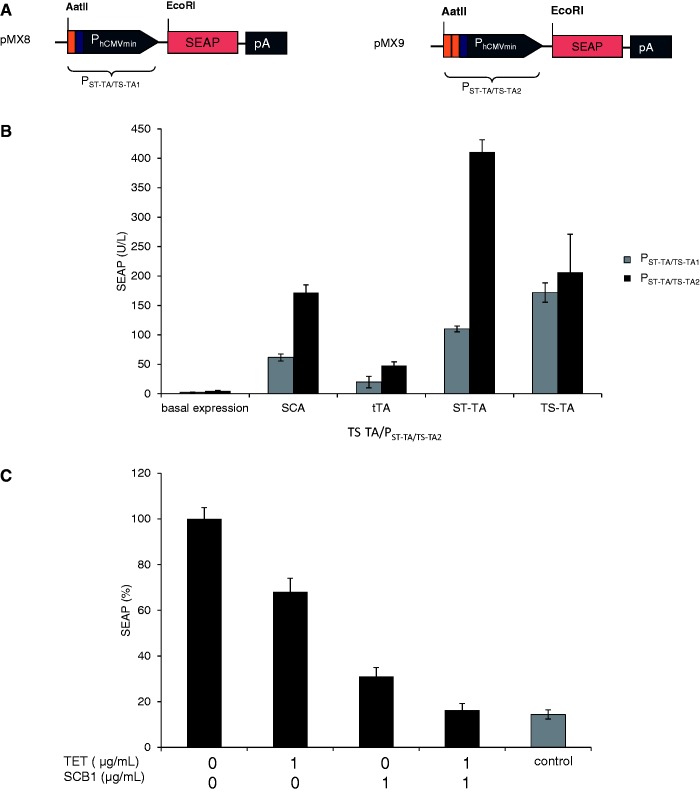Figure 7.
Regulation characteristics of ST-TA and TS-TA-specific hybrid promoters. (A) Schematic of ST-TA- and TS-TA-specific promoter variants combining one (PST-TA/TS-TA1) or two (PST-TA/TS-TA2) tetOs (orange) with a single ScbR-specific binding site (OPapRI, blue), all separated by two helical turns, with a minimal version of the human cytomegalovirus immediate early promoter. (B) Maximum ST-TA- and TS-TA-dependent induction of the hybrid promoters in the absence of any control molecules. HEK-293T cells were co-transfected with either the SCA- (pWW122), tTA- (pSAM200), ST-TA- (pMX1) or TS-TA- (pMX10) encoding plasmids in combination with either PST-TA/TS-TA1 (pMX8, gray) or PST-TA/TS-TA2 (pMX9, black) and cultivated for 48 h before SEAP levels were quantified in the culture supernatant. (C) TET- and γ-butyrolactone (SCB1)-regulated TS-TA (pMX10)-mediated transactivation of the pMX9-encoded hybrid promoter enables programming of discrete SEAP expression levels in response to a specific combination of inhibitory concentrations (1 µg/ml) of TET and SCB1. HEK-293T cells were co-transfected with pMX10 (TS-TA) and pMX9 (PST-TA/TS-TA2) and cultivated in medium containing different combinations of trigger compounds. HEK-293T cells exclusively transfected with pMX9 (PST-TA/TS-TA2) were used as control. Cells were grown for 48 h before SEAP levels were quantified in the culture supernatant.

